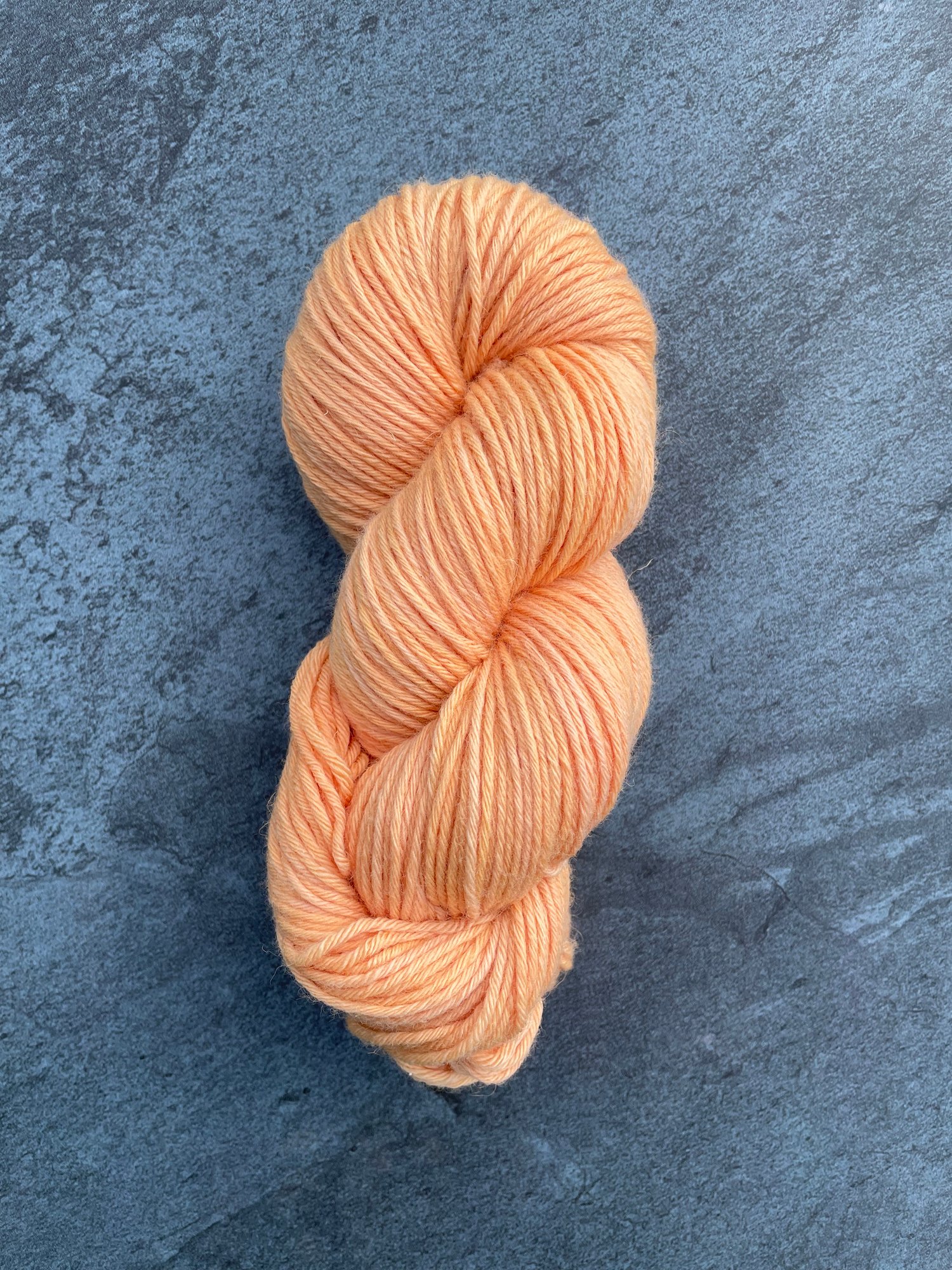If you're just here to see what the yarn looks like, ^^ that's it. If you'd like to read more about my method, keep going!
I recently attempted pickling and canning beets that I grew. It worked really well, but when I was done eating one of the jars I was left with a gorgeous fuchsia brine that I didn't want to throw out. Naturally, as someone who enjoys yarn and dyeing it, I decided to toss some yarn into the pot!

The dye bath was just my beet pickling brine with enough extra water added in cover the yarn.
I can't actually find the recipe I used to pickle the beets, but it was equal parts white vinegar and water, garlic, salt, dill seed, and two squirts of honey (super precise, I know).
The result is that I use a lot more vinegar that one would typically use for dyeing yarn. I'm also uncertain how the other brine elements impacted the color, if at all.
Method:
Pour brine into pot, add a few cups of cold water, place skein of dry, superwash yarn into pot (I used Knit Picks Felici Worsted). Allow the yarn to become fully saturated with the color before adding any heat.
Slowly raise the heat to a low simmer, cover, and allow to simmer for a few hours, stirring periodically.
Once the yarn has reached the color you like, or you feel it won't absorb any more color, turn off the heat, cover the pot, and allow to cool to room temperature.
Once the yarn has cooled, rinse it in cool water, then with wool wash or gentle soap until the water runs clear.
Hang it up to dry!
A note about colorfast-ness: from all I've read, beet juice is considered a "stain" as opposed to a "dye," which means that a skein that is stained will fade much more quickly than one which is dyed.
With this in mind, I plan to knit a hat and just toss it back into a beet juice bath whenever it starts to fade.
I hope this helps you on your natural dyeing adventures!



Comments ()